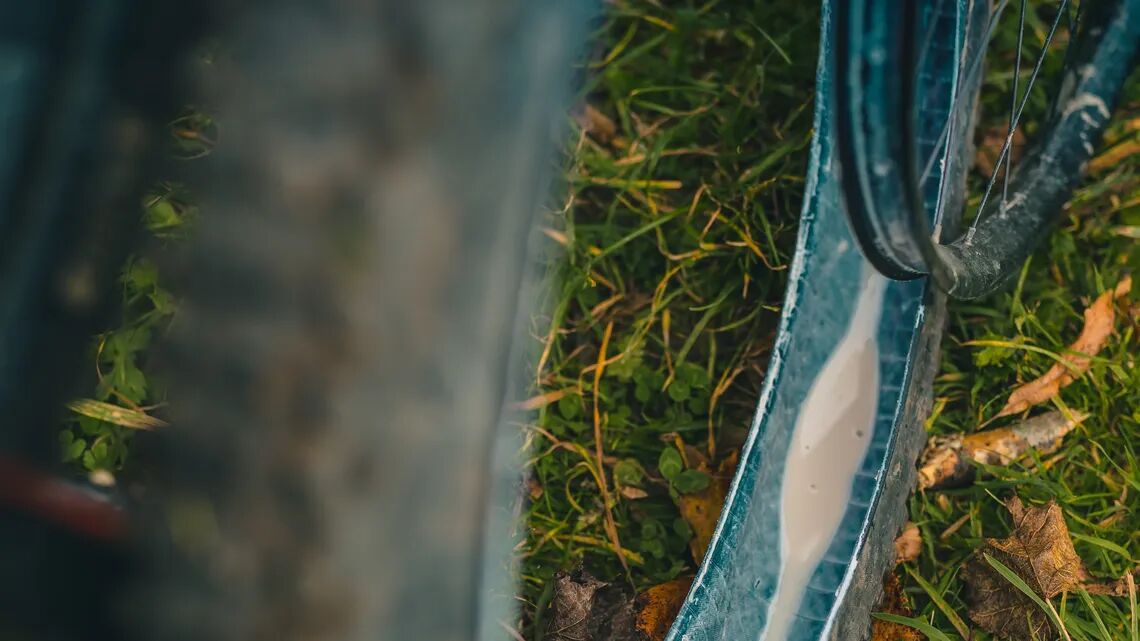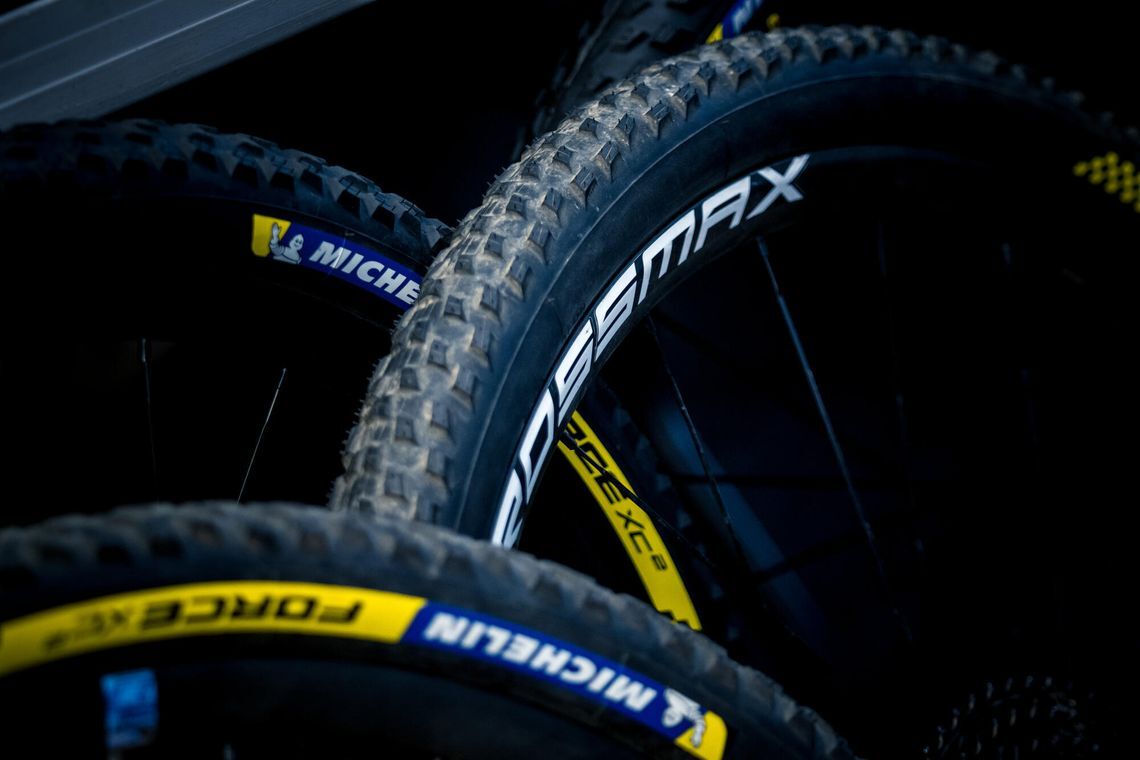What are tubeless bike tyres?
As the name suggests, tubeless bike tyres are pneumatic tyres with no inner tube. With traditional tyres, it is the inner tube that retains the air pressure, and it's this that you need to repair or replace in the event of a puncture. On both normal tyres and tubeless bike tyres, the tyre itself is held in place by its beaded edges connecting with the lips of the rim. The difference with tubeless bike tyres is that this forms an airtight seal.
Tubeless bike tyres can be more difficult to fit because the seal between rim and tyre needs to be extra tight. However, with proper preparation and care, fitting tubeless tyres should not be a problem.
The pros and cons of tubeless bike tyres
In the past, compatibility has been an issue with tubeless bike tyres. However, this has been regularised and many tubeless tyres now use standard Tubeless Ready conforming tyres and rims.
To decide on the suitability of tubeless ready tyres for your ride, you need to consider the pros and cons.
The pros of tubeless bike tyres
- They need lower pressure so tend to be more comfortable, with improved traction and handling.
- Their rolling resistance also tends to be lower, because there's no interaction between tyre and inner tube.
- Punctures are less common, and there's less risk of pinch flats. What's more, many punctures simply reseal themselves thanks to the sealant
The cons of tubeless bike tyres
- Because of the tight seal, tubeless bike tyres can be tricky to fit and remove.
- They can be expensive, and usually require special rims.
- You'll probably need extra equipment, and maybe a compressor.
- Tubeless bike tyres don't hold their pressure quite as well, and sharp impacts or intense cornering forces can sometimes cause air leakage.
- Sealant may need reapplication frequently (it depends on the sealant, globally we advise you to add some sealant every 3 months).
What do I need to fit tubeless bike tyres?
Have you decided to use tubeless bicycle tyres? Before mounting them on your bike, it is important to be well prepared. You may already have the tools for fitting traditional inner tube tyres, but there are some special requirements for tubeless bike tyres.
Here’s what you will need:
- A Tubeless or tubeless ready tyre. Tubeless ready tyres have specially designed beads to stay in place more reliably.
- A tubeless or tubeless ready rim.
- A tubeless valve. It will be a Presta valve for a tubeless use
- Two tyre levers.
- A pump or compressor. Depending on the type of tyre, you might need a compressor to achieve adequate tyre pressure.
- Latex sealant.
- A sponge, plus soap and water.
How to fit your tubeless bike tyre?
How to Mount a Tubeless Ready* MTB Tire - Michelin Bike
The following steps are given with MTB tyres in mind. If you're wondering how to fit tubeless road tyres, the process is basically the same.
Here's the step-by-step process to fit your tubeless bike tyre:
First, check the condition of your wheel. Hold it vertically in front of you by the axle and spin it gently to make sure it isn't warped or damaged. Damaged rims will impair the tyres' ability to form a seal.
Clean the rim. Pay special attention to the inside, making sure there are no extraneous particles. If you have a tubeless ready rim, you must check that your rim tape fit properly.
Now take your valve and fit it in the rim. Add the rubber washer and nut, tighten to secure.
Your tubeless ready tyre will typically arrive folded. Unpack the tyre and reform it to its proper shape, ready for fitting. Pay special attention to the direction: the tyre wall should clearly indicate which way is forward.
To get the tyre around the rim, you'll need to lubricate the rim and tyre beads before fitting. Use a wet sponge and gently rub your soap to get a slippery effect. Then wipe this over the rim and whichever side of the tyre you plan to fit first.
Hold the wheel vertically and insert the first bead into the rim, pushing it all around to make sure it is properly seated.
Turn the wheel around and apply your soap and water solution to the other bead. Now you're ready to fit this side.
Fitting the second bead is usually the tough bit. Start at the side diametrically opposite the valve. Work the tyre bead into the rim symmetrically, using both hands.
When only a small gap around the valve remains, hold the wheel vertically again with the gap at the bottom.
Measure out 60ml of sealant and pour it into the gap so that it sits in the tyre. Now rotate the wheel to distribute the sealant around the whole tyre. Quantity of sealant depends on the tyre. The wider the tyre, the more sealant is needed.
Push the tyre bead in fully to close, then use your tyre levers to check and make sure it is properly fitted all the way round.
Check the 2 beads are positioned on each side of the valve.
Using a pump or compressor, inflate the tyre to its correct operating pressure as indicated on the tyre wall. Do not over inflate.
Check the tyre is correctly positioned on the rim.
Spin the wheel around vertically again, angling left and right to make sure the sealant fully coats the inside of the tyre.
Inspect the tyre again for any irregularities.
Make final adjustments to the tyre pressure for your riding style and terrain. Now you're good to go!

Frequently asked questions
FAQs: Tubeless ready tyre fitting
Tubeless bike tyres are now very common on mountain bikes. Their ability to be ridden at lower pressures means greater comfort and traction on rough ground. Fitting tubeless tyres on a road bike option is a tougher prospect because of the higher tyre pressures involved. However, with effective tyres like MICHELIN Power Cup TLR Competition Line, many road bike users are also now moving to tubeless ready for better handling and lower rolling resistance.
It's possible but not recommended. For fat, low-pressure, regular tyres on regular rims, there's a chance they may form an adequate seal, but the risk of leakage is much higher, for additional questions get closer with a certified professional. For road bikes, you should never try to go tubeless without the right parts – because of the higher tyre pressures.
Tubeless ready tyres are less prone to punctures, and, of course, pinch flats happen less. What's more, many small punctures will seal by themselves because of the presence of sealant within the tyre. In the event of a puncture that won't self-seal, you can either simply fit an inner tube, or fix it with a tubeless ready tyre plug.
Tubeless bike tyre sealant is a thin, milky latex-based liquid that needs to remain fluid inside the tyre in order to flow into any punctures. However, it does dry out after a few months. It depends on the sealant specs. We advise to reapply sealant every 3 months to keep your tyres running reliably.
In the past, it has been a bit hazardous to assume compatibility for any given rim and tyre combination. These days, there's a reasonable expectation that any tyre and rim pairing should work, though some are more effective than others. For performance and airtightness, a good bet is to use tyres and rims that conform to the Tubeless Ready standard, like MICHELIN's range of tubeless mountain bike tyres.


